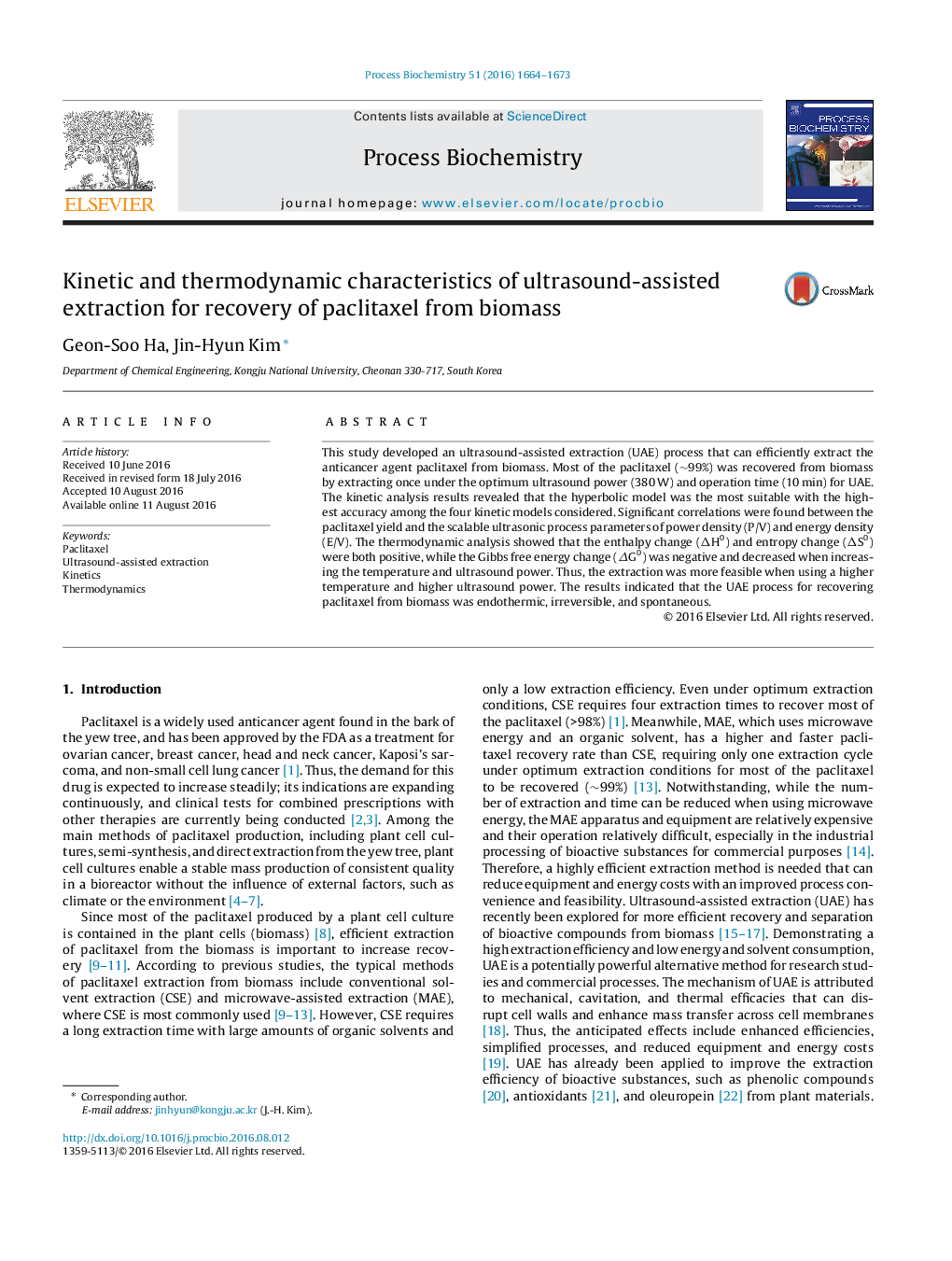| کد مقاله | کد نشریه | سال انتشار | مقاله انگلیسی | نسخه تمام متن |
|---|---|---|---|---|
| 6453071 | 1361514 | 2016 | 10 صفحه PDF | دانلود رایگان |
- Most of the paclitaxel was recovered by ultrasound-assisted extraction.
- The optimum ultrasound power and time were 380Â W and 10Â min.
- The hyperbolic model was the most suitable for extraction.
- The yield was correlated with the power and energy density.
- The extraction process was endothermic, irreversible, and spontaneous.
This study developed an ultrasound-assisted extraction (UAE) process that can efficiently extract the anticancer agent paclitaxel from biomass. Most of the paclitaxel (â¼99%) was recovered from biomass by extracting once under the optimum ultrasound power (380Â W) and operation time (10Â min) for UAE. The kinetic analysis results revealed that the hyperbolic model was the most suitable with the highest accuracy among the four kinetic models considered. Significant correlations were found between the paclitaxel yield and the scalable ultrasonic process parameters of power density (P/V) and energy density (E/V). The thermodynamic analysis showed that the enthalpy change (ÎH0) and entropy change (ÎS0) were both positive, while the Gibbs free energy change (ÎG0) was negative and decreased when increasing the temperature and ultrasound power. Thus, the extraction was more feasible when using a higher temperature and higher ultrasound power. The results indicated that the UAE process for recovering paclitaxel from biomass was endothermic, irreversible, and spontaneous.
170
Journal: Process Biochemistry - Volume 51, Issue 10, October 2016, Pages 1664-1673
